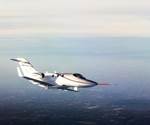General aviation composites: From fairings to fuselages
Market forecaster Chris Red sketches general aviation's long history with composites.
General aviation (GA) has had a long history with composites. Many of the platforms included in this market outlook feature advanced composites in flight-control surfaces and some empennage skins, as well as aerodynamic fairings around the wings and stabilizers. These applications represent from 6 percent to 20 percent of an aircraft’s airframe.
The aircraft’s fuselage and wings each roughly account for 35 percent of the remaining airframe mass. Although GA manufacturers as a group are currently more conservative in their use of composites in primary structures, individual manufacturers were among the first to produce all-composite airframes. These included the Lear Avia (now the Learjet subsidiary of Bombardier Aerospace, Dorval, Quebec, Canada) Learfan 2100 in the early 1980s and the Hawker Beechcraft (Wichita, Kan.) Starship later in that decade. Only a few all-composite aircraft are included in this forecast, but a growing number of OEMs are finding it competitively advantageous to convert fuselages and other major subassemblies from aluminum to composites. On many of these aircraft, composite materials account for 50 percent to as much as 65 percent of the total airframe weight. Although composites continue to penetrate the GA structural materials market, it is important to note that an aluminum fuselage and wing are still the norm, rather than the exception, in GA manufacturing.
Related Content
-
The potential for thermoplastic composite nacelles
Collins Aerospace draws on global team, decades of experience to demonstrate large, curved AFP and welded structures for the next generation of aircraft.
-
A new era for ceramic matrix composites
CMC is expanding, with new fiber production in Europe, faster processes and higher temperature materials enabling applications for industry, hypersonics and New Space.
-
PEEK vs. PEKK vs. PAEK and continuous compression molding
Suppliers of thermoplastics and carbon fiber chime in regarding PEEK vs. PEKK, and now PAEK, as well as in-situ consolidation — the supply chain for thermoplastic tape composites continues to evolve.












